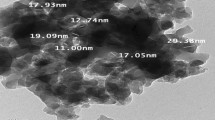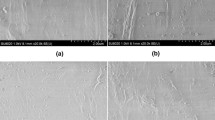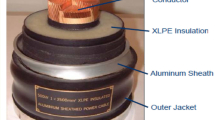Abstract
It has been extensively observed in experiments that nanoparticle additives can efficiently inhibit the electrical tree growth of the cross-linked polyethylene (XLPE) matrix of power cables. Inspired by this, the first-principles calculations employing the density functional theory (DFT) method were performed in this study to investigate the significant role of SiO2 nanosized fillers as a voltage stabilizer for power cable insulation. Several different types of α-SiO2 fillers, including hydroxylated, reconstructed, doped or oxygen vacancy surface structures, were constructed to model the interfacial interaction for SiO2/XLPE nanocomposites. It is found that the SiO2 additives can restrict the movement of the polyethylene chain through van der Waals physical interaction. More importantly, based on the Bader charge analysis we reveal that SiO2 could effectively capture hot electrons to suppress space charge accumulation in XLPE. However, some particular modified-surface SiO2, such as incompletely hydroxylated, B-doped, and oxygen vacancy defect on the top layer, could induce the H migration reaction and consequent electrical tree growth of the XLPE chain. In contrast, the SiO2 particles that have N-doped or oxygen vacancy on the lower layer with completely hydroxylated surfaces, as well as the reconstructed surface, are predicted to be favorable additives because of their quite strong physical interaction and very weak chemical activity with XLPE. The present study is useful to understand the mechanism of the nanosized voltage stabilizer and also provide important information for further experimental investigation.





Similar content being viewed by others
References
Munteanu D (1997) Moisture cross-linkable silane-modified polyolefins. In: Al-Malaika S (ed) Reactive modifiers for polymers. Springer, Dordrecht, pp 196–265
Ramachandran S, Hartlein R, Chandak P (1999) A comparative economic analysis for underground distribution cables insulated with TR-XLPE and EPR. In: IEEE/PES transmission and distribution conference, 11–16 Apr 1999, pp 112–119
Pollet P, Liotta CL, Eckert CA, Verma M, Nixon E, Sivaswamy S, Jha R, Momin F, Gelbaum L, Chaudhary BI (2011) Radical-mediated graft modification of polyethylene models with Vinyltrimethoxysilane: a fundamental study. Ind Eng Chem Res 50:12246–12253
Mizutani T, Hikita M, Umemura A, Ieda M (1989) Electrical breakdown and space charge of polyphenylene sulfide films. In: Conference on electrical insulation and dielectric phenomena, 29 Oct −01 Nov 1989, pp 315–320
Jarvid M, Johansson A, Englund V, Gubanski S (2012) Electrical tree inhibition by voltage stabilizers. In: IEEE conference on electrical insulation and dielectric phenomena, 14–17 Oct 2012, pp 605–608
Yin Y, Tu D, Du Q, Gong Z (2000) Distribution and effect of space charge on dielectric properties in modified XLPE by chlorinated polyethylene. In: 6th international conference on properties and applications of dielectric materials, 21–26 Jun 2000, pp 268–271
Bradwell A, Cooper R, Varlow B (1971) Conduction in polythene with strong electric fields and the effect of prestressing on the electric strength. Proc IEE 118(1):247–254
Du BX, Su JG, Han T (2015) Effects of magnetic field on electrical tree growth in silicone rubber under repetitive pulse voltage. IEEE Trans Dielectr Electr Insul 22(4):1785–1792
Werelius P, Tharning P, Eriksson R, Holmgren B (2001) Dielectric spectroscopy for diagnosis of water tree deterioration in XLPE cables. IEEE Trans Dielectr Electr Insul 8(1):27–42
Crine JP (1998) Electrical, chemical and mechanical processes in water treeing. IEEE Trans Dielectr Electr Insul 5(5):681–694
Englund V, Huuva R, Gubanski SM, Hjertberg T (2009) Synthesis and efficiency of voltage stabilizers for XLPE cable insulation. IEEE Trans Dielectr Electr Insul 16(5):1455–1461
Kisin S, Doelder JD, Eaton RF, Caronia PJ (2009) Quantum mechanical criteria for choosing appropriate voltage stabilization additives for polyethylene. Polym Degrad Stab 94(2):171–175
Suh KS, Sun Jun H, Lee CR (1997) Charge behavior in polyethylene-ionomer blends. IEEE Trans Dielectr Electr Insul 4(1):58–63
Yin Y, Du Q, Gong Z (2000) Influence of blending chlorinated polyethylene on the space charge effect in polyethylene. Trans China Electrotech Soc 15(2):52–57
Pleşa I, Noţingher PV, Schlögl S, Sumereder C, Muhr M (2016) Properties of polymer composites used in high-voltage applications. Polymers 8(5):173–176
Ieda M, Nagao M, Hikita M (1994) High-field conduction and breakdown in insulating polymers. Present situation and future prospects. IEEE Trans Dielectr Electr Insul 1(5):934–945
Vaughan AS, Hosier IL, Dodd SJ, Sutton SJ (2006) On the structure and chemistry of electrical trees in polyethylene. J Phys D Appl Phys 39(5):962–978
Chen X, Xu Y, Cao X, Dodd SJ, Dissado LA (2011) Effect of tree channel conductivity on electrical tree shape and breakdown in XLPE cable insulation samples. IEEE Trans Dielectr Electr Insul 18(3):847–860
Kurnianto R, Murakami Y, Hozumi N, Nagao M (2007) Characterization of tree growth in filled epoxy resin: the effect of filler and moisture contents. IEEE Trans Dielectr Electr Insul 14(2):427–435
Iizuka T, Tanaka T (2009) Effects of nano silica filler size on treeing breakdown lifetime of epoxy nanocomposites. In: 9th international conference on properties and applications of dielectric materials, 19–23 Jun 2009, pp 733–736
Tanaka T, Iizuka T, Sekiguchi Y, Murata Y (2009) Tree initiation and growth in LDPE/MgO nanocomposites and roles of nano fillers. In: Annual report conference on electrical insulation and dielectric phenomena, 18–21 Oct 2009, pp 646–649
Tanaka T, Bulinski A, Castellon J, Frechette M, Gubanski S, Kindersberger J, Montanari GC, Nagao M, Morshuis P, Tanaka Y, Pelissou S, Vaughan A, Ohki Y, Reed CW, Sutton S, Han SJ (2011) Dielectric properties of XLPE/SiO2 nanocomposites based on CIGRE WG D1.24 cooperative test results. IEEE Trans Dielectr Electr Insul 18(5):1482–1517
Zhang L, Zhou Y, Huang M, Sha Y, Tian J, Ye Q (2014) Effect of nanoparticle surface modification on charge transport characteristics in XLPE/SiO2 nanocomposites. IEEE Trans Dielectr Electr Insul 21(2):424–433
Li Z, Okamoto K, Ohki Y, Tanaka T (2011) The role of nano and micro particles on partial discharge and breakdown strength in epoxy composites. IEEE Trans Dielectr Electr Insul 18(3):675–681
Ding HZ, Varlow BR (2004) Effect of nano-fillers on electrical treeing in epoxy resin subjected to AC voltage. In: Annual conference on electrical insulation and dielectric phenomena (CEIDP), 17–20 Oct 2004, pp 332–335
Wang Y, Wang C, Xiao K (2016) Investigation of the electrical properties of XLPE/SiC nanocomposites. Polym. Test. 50:145–151
Wang Y, Xiao K, Wang C, Yang L, Wang F (2016) Study on dielectric properties of TiO2/XLPE nanocomposites. In: IEEE international conference on high voltage engineering and application (ICHVE), 19–22 Sept 2016, pp 1–4
Han B, Jiao M, Li C, Zhang C, Wu Z, Wang Y, Zhang H (2015) QM/MD simulations on the role of SiO2 in polymeric insulation materials. RSC Adv 6(1):555–562
Song S, Zhao H, Zheng X, Zhang H, Liu Y, Wang Y, Han B (2018) A density functional theory study of the role of functionalized graphene particles as effective additives in power cable insulation. R Soc Open Sci 5(2):170772
Hickel PE, Lafon F, Fortis F, Cambon O, Demazeau G (1997) On the development of new solvents for the high pressure crystal growth of α-quartz. Ann Chim-Sci Mat 22(8):571–576
Hickel PE, Lafon F, Chvansky PP, Largeteau A, Demazeau G (1997) Influence of the different physico-chemical parameters governing the crystal growth of α-quartz on the concentration of chemical defects. Ann Chim-Sci Mater 22(8):583–588
Balascio JF, Lind T (1997) The growth of piezoelectric alpha quartz crystals. Curr Opin Solid State Mater Sci 2(5):588–592
de Leeuw NH, Higgins FM, Parker SC (1999) Modeling the surface structure and stability of α-quartz. J Phys Chem B 103(8):1270–1277
Wegener J, Janshoff A, Steinem C (2001) The quartz crystal microbalance as a novel means to study cell-substrate interactions in situ. Cell Biochem Biophys 34(1):121–151
Du B, Johannsmann D (2004) Operation of the quartz crystal microbalance in liquids: derivation of the elastic compliance of a film from the ratio of bandwidth shift and frequency shift. Langmuir 20(7):2809–2812
Ayad MM, Zaki EA, Stejskal J (2007) Determination of the dopant weight fraction in polyaniline films using a quartz-crystal microbalance. Thin Solid Films 515(23):8381–8385
Goumans TPM, Wander A, Brown WA, Catlow CRA (2007) Structure and stability of the (001) alpha-quartz surface. Phys Chem Chem Phys 9(17):2146–2152
Han JW, James JN, Sholl DS (2008) First principles calculations of methylamine and methanol adsorption on hydroxylated quartz (0001). Surf Sci 602(14):2478–2485
Rignanese GM, De Vita A, Charlier JC, Gonze X, Car R (2000) First-principles molecular-dynamics study of the (0001) α−quartz surface. Phys Rev B 61(19):13250–13255
Chen Y-W, Cao C, Cheng H-P (2008) Finding stable α-quartz (0001) surface s tructures via simulations. Appl Phys Lett 93(18):181911
Jánossy I, Menyhárd M (1971) LEED study of quartz crystals. Surf Sci 25(3):647–649
Bart F, Gautier M (1994) A LEED study of the (0001) a-quartz surface reconstruction. Surf. Sci. 311(1–2):L671–L676
Koudriachova MV, Beckers JVL, de Leeuw SW (2001) Computer simulation of the quartz surface: a combined ab initio and empirical potential approach. Comput Mater Sci 20(3):381–386
Del Rosal I, Gerber IC, Poteau R, Maron L (2015) Grafting of lanthanide complexes on silica surfaces dehydroxylated at 200 °C: a theoretical investigation. New J Chem 39(10):7703–7715
Skuja L, Kajihara K, Hirano M, Hosono H (2012) Oxygen-excess-related point defects in glassy/amorphous SiO2 and related materials. Nucl Instrum Methods Phys Res B 286:159–168
Nicklaw CJ, Pagey MP, Pantelides ST, Fleetwood DM, Schrimpf RD, Galloway KF, Wittig JE, Howard BM, Taw E, McNeil WH, Conley JF (2000) Defects and nanocrystals generated by Si implantation into a-SiO2. IEEE Trans Nucl Sci 47(6):2269–2275
Chandrasekhar PS, Komarala VK (2015) Effect of graphene and au@SiO2 core-shell nano-composite on photoelectrochemical performance of dye-sensitized solar cells based on N-doped titania nanotubes. RSC Adv 5(103):84423–84431
Zhao X, He XD, Zhang S, Wang LD, Li MW, Li YB (2011) Investigations on B-doped SiO2 thermal protective coatings by hybrid sol–gel method. Thin Solid Films 519(15):4849–4854
Zhang SS, Zhao ZY, Yang PZ (2015) Analysis of electronic structure and optical properties of N-doped SiO2 based on DFT calculations. Mod Phys Lett B 29(19):1550100
Pacchioni G, Vezzoli M, Fanciulli M (2001) Electronic structure of the paramagnetic boron oxygen hole center in B-doped SiO2. Phys Rev B 64(15):155201
Kresse G, Furthmüller J (1996) Efficient iterative schemes for ab initio total-energy calculations using a plane-wave basis set. Phys Rev B 54(16):11169–11186
Kresse G, Hafner J (1993) Ab initio molecular dynamics for liquid metals. Phys Rev B 47(1):558–561
Kresse G, Hafner J (1994) Norm-conserving and ultrasoft pseudopotentials for first-row and transition elements. J Phys Condens Matter 6(40):8245–8257
Perdew JP, Burke K, Ernzerhof M (1996) Generalized gradient approximation made simple. Phys Rev Lett 77(18):3865–3868
Blöchl PE, Jepsen O, Andersen OK (1994) Improved tetrahedron method for Brillouin-zone integrations. Phys Rev B 49(23):16223–16233
Bader RFW (1991) A quantum theory of molecular structure and its applications. Chem Rev 91(5):893–928
Bader RFW (1994) Atoms in molecules: a quantum theory. THEOCHEM J Mol Struct 360(1–3):175
Pan D, Liu L-M, Tribello GA, Slater B, Michaelides A, Wang E (2008) Surface energy and surface proton order of ice Ih. Phys Rev Lett 101(15):155703
Henkelman G (2000) Improved tangent estimate in the nudged elastic band method for finding minimum energy paths and saddle points. J Chem Phys 113(113):9978–9985
Henkelman G, Uberuaga BP, Jónsson H (2000) A climbing image nudged elastic band method for finding saddle points and minimum energy paths. J Chem Phys 113(22):9901–9904
Liu Q, Poumellec B, Blum R, Girard G (2006) Stability of electron-beam poling in N or Ge-doped H:SiO2 films. Appl Phys Lett 88(24):693
Weidner DJ (1980) Structure and elastic properties of quartz at pressure. Am Mineral 65(2):920–930
Malyi OI, Kulish VV, Persson C (2014) In search of new reconstructions of (001) α-quartz surface: a first principles study. RSC Adv 4(98):55599–55603
Pacchioni G (2000) Ab initio theory of point defects in oxide materials: structure, properties, chemical reactivity. Solid State Sci 2(2):161–179
Raghavachari K, Ricci D, Pacchioni G (2002) Optical properties of point defects in SiO2 from time-dependent density functional theory. J Chem Phys 116(2):825–831
Acknowledgments
This work was supported by the National Natural Science Foundation of China (Grant No. 21203041), Natural Science Foundation of Heilongjiang province in China (Grant No. B2016004), the Fundamental Research Funds for the Central Universities in China (Grant No. HIT. NSRIF. 2017033), and the open project of Key Laboratory of Engineering Dielectrics and Its Application (Harbin University of Science and Technology), Ministry of Education, (Grand No. KF20151105).
Author information
Authors and Affiliations
Corresponding author
Ethics declarations
Conflicts of interest
There are no conflicts of interest to declare.
Electronic supplementary material
ESM 1
(DOCX 3145 kb)
Rights and permissions
About this article
Cite this article
Zheng, X., Liu, Y. & Wang, Y. Electrical tree inhibition by SiO2/XLPE nanocomposites: insights from first-principles calculations. J Mol Model 24, 200 (2018). https://doi.org/10.1007/s00894-018-3742-4
Received:
Accepted:
Published:
DOI: https://doi.org/10.1007/s00894-018-3742-4




